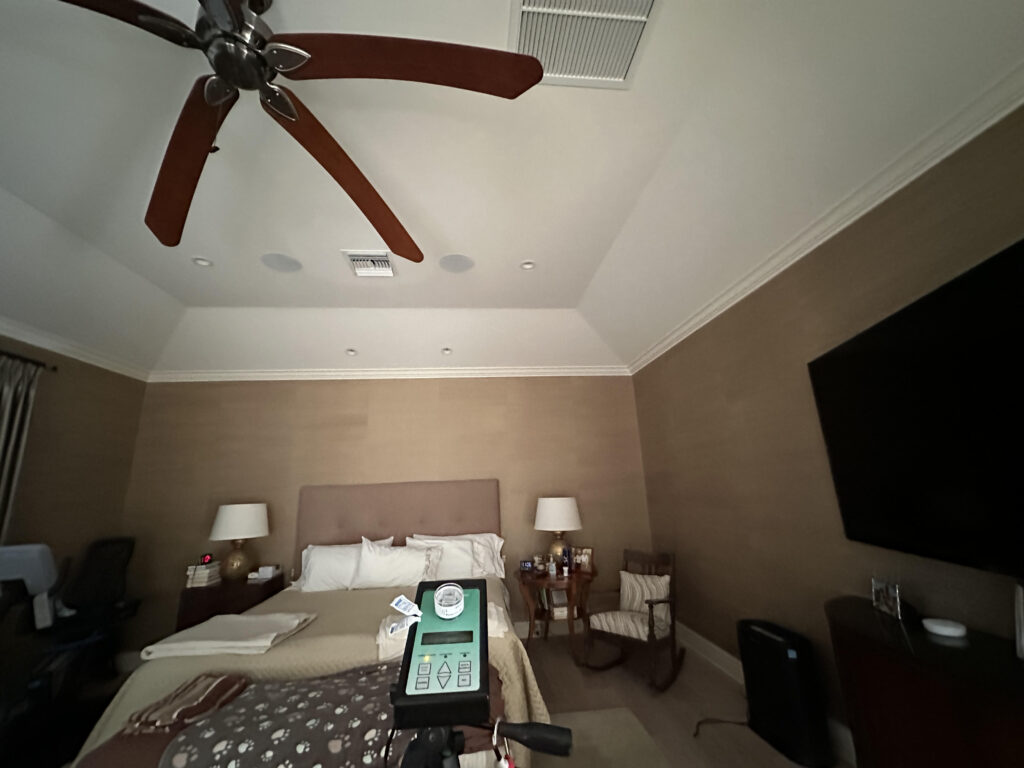Water damage is one of the leading causes of mold growth in homes and commercial properties. When water infiltrates materials like drywall, wood, or carpeting, it can create the ideal environment for mold to thrive. Understanding the science behind mold growth can empower homeowners and property managers to prevent mold after water damage, saving time, money, and health risks in the long run.
Understanding the Science of Mold Growth
Mold is a type of fungus that naturally exists in the environment and plays an essential role in breaking down organic material outdoors. Indoors, however, it becomes a problem, especially when growing on water-damaged surfaces. Mold spores, the microscopic seeds of mold, are present in the air around us and can settle on surfaces. Once they find the right conditions, these spores can quickly multiply, leading to visible mold growth.
The Two Requirements for Mold Growth
Mold requires two primary components to grow and spread: moisture (from water damage) and a nutrient source (organic materials commonly found in building structures).
- Water or Moisture: Mold cannot grow without moisture. When water damage occurs – whether from a burst pipe, leaky roof, flood, or condensation – it saturates materials, creating a damp environment. Mold spores absorb this water, activating their metabolic processes, which allow them to begin growing and producing colonies.
- Nutrients (Organic Building Materials): Mold spores thrive on organic matter. Building materials like wood, drywall, wallpaper, and insulation provide an ample food source for mold. These materials contain cellulose, a carbohydrate that mold can break down and consume. The combination of water and nutrient-rich materials creates an ideal environment for mold spores to grow and proliferate, often within 24-48 hours of water exposure.
How Water Damage Promotes Mold Growth
When building materials remain damp over time, they not only support the growth of mold spores but also accelerate structural damage. Prolonged exposure to moisture can weaken materials like wood and drywall, making them more vulnerable to decay and more accessible for mold to digest and colonize. Without intervention, this can lead to significant mold spread, often requiring costly remediation and repairs.
Steps to Prevent Mold Growth After Water Damage
To prevent mold after water damage, acting quickly is essential. Here are some key steps:
- Dry Affected Areas Immediately:
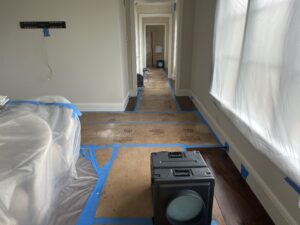
Hallway containment setup for mold remediation with protective barriers and drying equipment. Time is critical after water damage. Begin drying affected areas within 24 to 48 hours to prevent mold from establishing itself. Use fans, dehumidifiers, and air conditioning to reduce humidity levels, particularly in smaller or enclosed areas. In severe cases, professional drying equipment may be necessary.
- Remove and Replace Water-Damaged Materials:
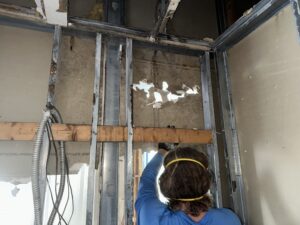
Technician conducting mold remediation in wall cavity, addressing hidden mold growth. If certain materials, like carpet, ceiling tiles, or drywall, have been soaked for an extended period, they may need to be removed and replaced to prevent future mold growth. Materials with visible mold should be discarded to avoid contamination of other areas.
- Control Humidity Levels:

AprilAire dehumidifier system installed in an attic, featuring insulated ductwork and spray foam insulation to optimize humidity control and air quality. Keeping indoor humidity below 60% (ideally between 30-50%) makes it harder for mold to thrive. Humidity meters are inexpensive and can help monitor moisture levels in spaces prone to dampness, such as basements or bathrooms.
- Inspect for Leaks and Repair Promptly:
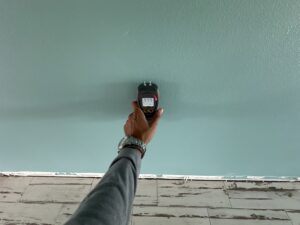
Moisture level reading on wall using a handheld moisture meter during inspection Regularly inspect your property for signs of leaks in the roof, plumbing, or foundation. Repair any issues immediately to prevent moisture buildup that can lead to mold growth.
- Use Mold-Resistant Materials:
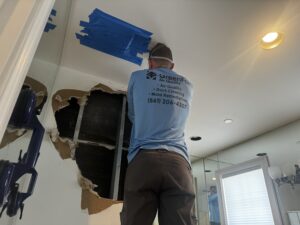
Technician repairing ceiling damage and addressing mold issues in a residential bedroom If you’re renovating or repairing water-damaged areas, consider using mold-resistant products like drywall and paint. These materials are less susceptible to mold growth, adding a layer of protection.
- Hire a Professional Mold Remediation Service:
If you notice signs of mold after water damage, it’s essential to consult a professional mold remediation service. These experts can assess the extent of mold contamination, safely remove it, and restore the area to prevent future growth.
When to Call in a Professional
While DIY drying and cleanup efforts can be effective for minor water damage, extensive mold contamination or prolonged water exposure typically requires professional help. Mold remediation specialists are equipped to handle large areas of mold growth, identify hidden mold, and use industry-grade cleaning and restoration techniques that can fully restore affected areas.
Water damage can quickly lead to mold, but understanding the science behind mold growth can help you prevent and mitigate its effects. By acting fast, controlling moisture, and knowing when to call for professional help, you can protect your home and health from the consequences of mold.


